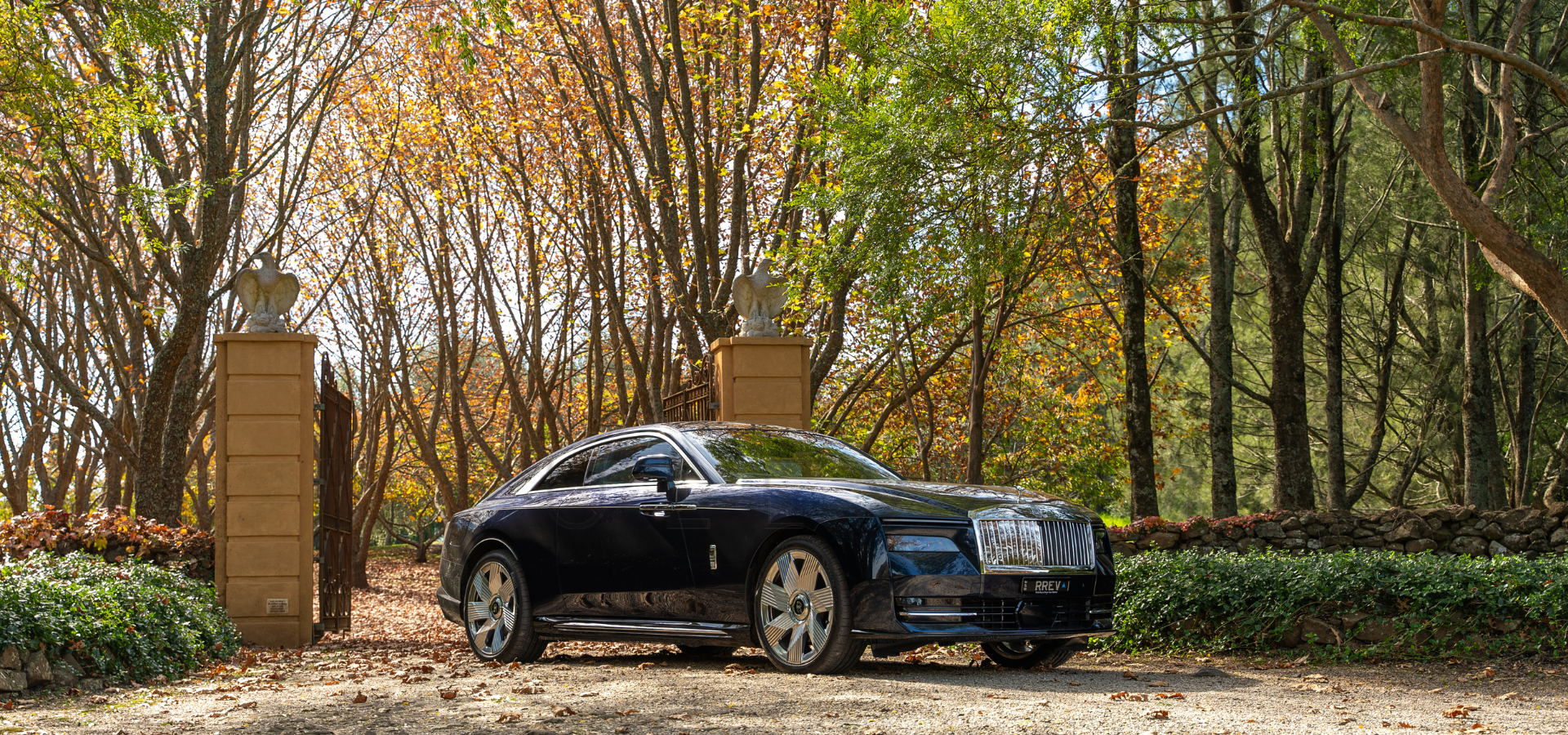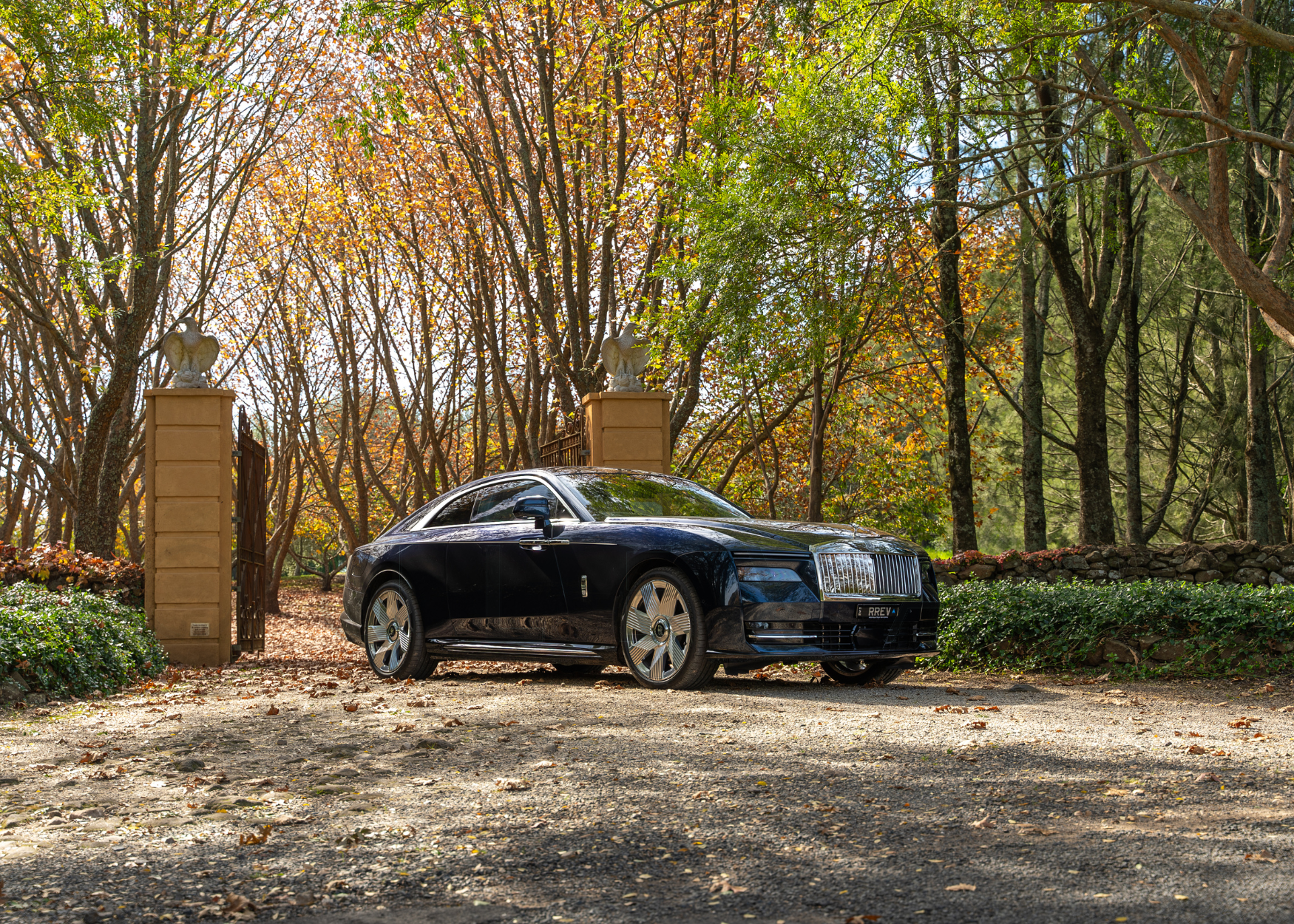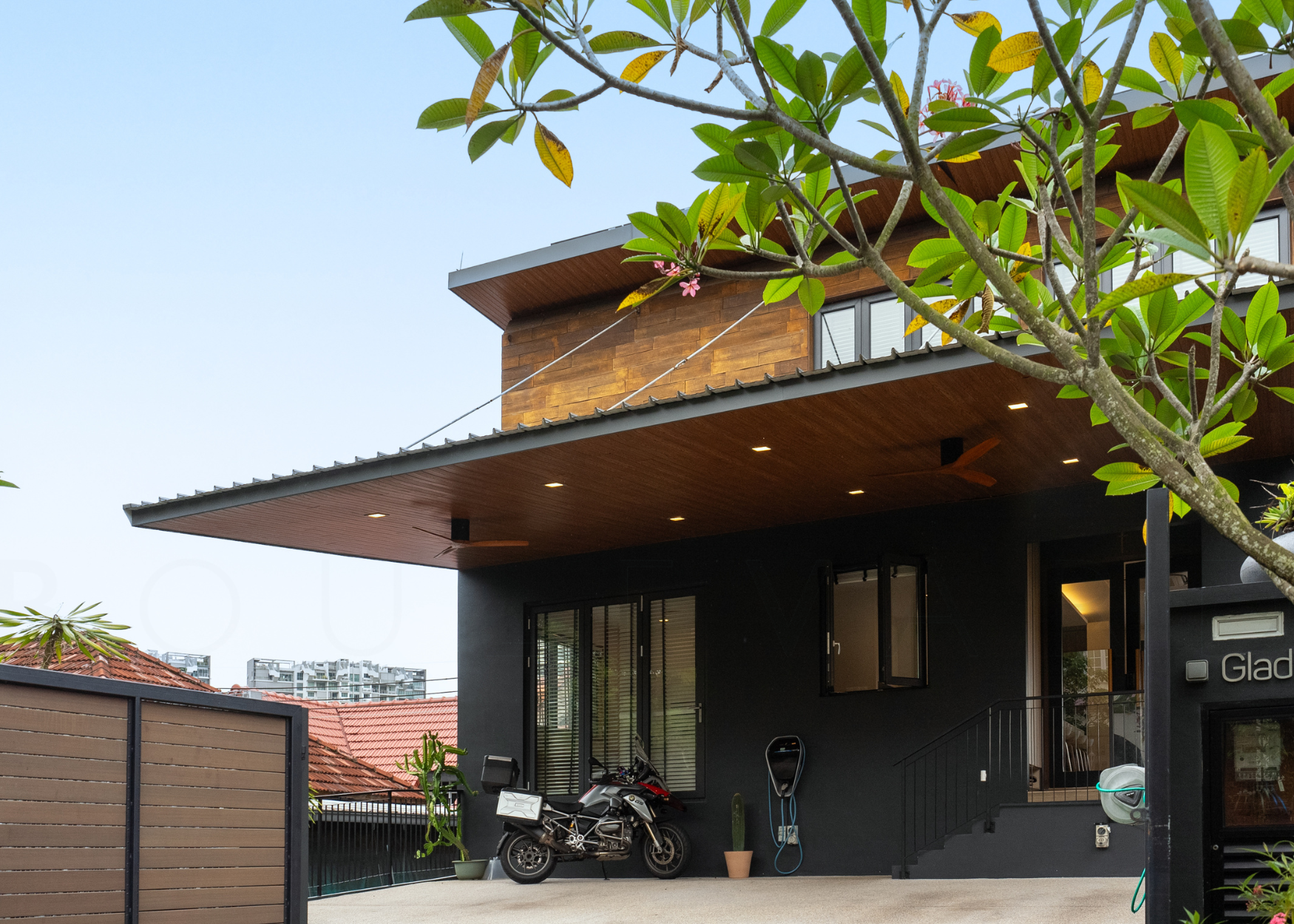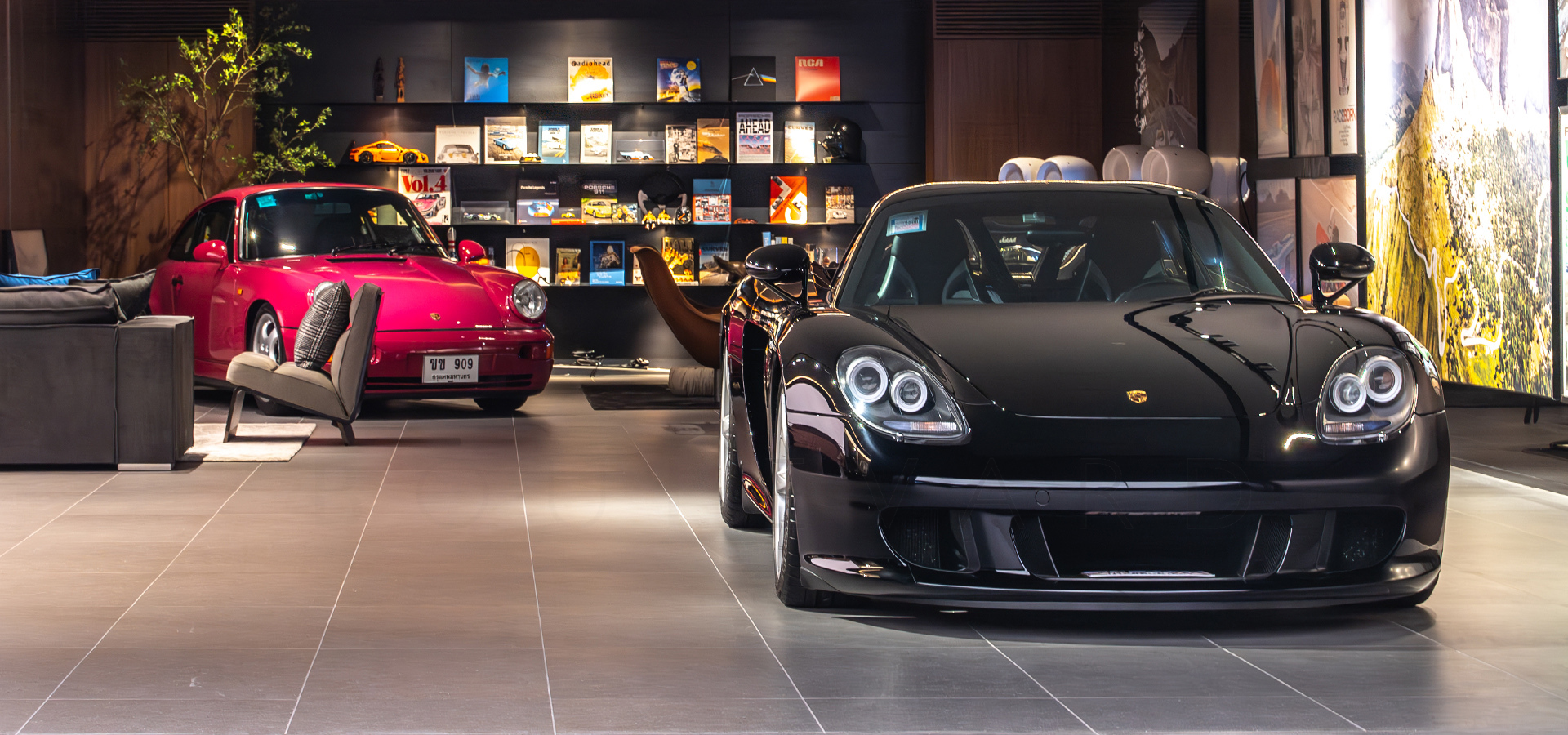Rolls-Royce Spectre review: The long-standing pursuit of serenity
The Rolls-Royce Spectre has silence, sophistication and elegance at the forefront.
Upon Spectre’s reveal, Rolls-Royce’s now-retired CEO, Torsten Müller-Ötvös, proclaimed this four-seater, two-door super coupé was a “Rolls-Royce first and an electric car second.” Rather than choosing to launch its new era of electrification with a futuristic design (or with an SUV), as seen elsewhere within the industry, Rolls-Royce has brought the familiar into the future. Aside from its new shape and a fresh aerodynamically redesigned Spirit of Ecstasy rising out of the bonnet, Spectre is a beautiful, sleek masterpiece of how an iconic marque can subtly evolve with the times.
Spectre is the first glimpse we’ve had of Rolls-Royce’s road to full electrification, but importantly, it also continues the legacy and vision of co-founder, Charles Rolls, who was once so fascinated and awe-struck by the serenity and cleanliness of the ‘electric carriage’, over a century ago.
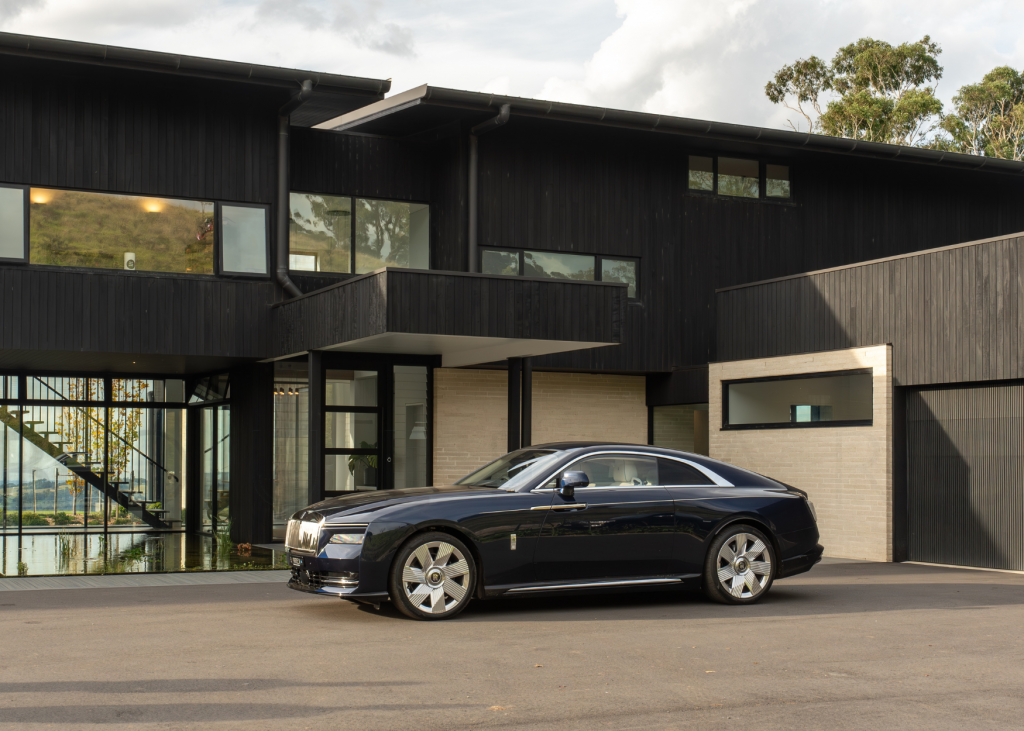
In numbers, Spectre is powered by two motors and a 102kWh battery, giving the super coupé a total of 430kW/900Nm of power and torque, a swift and serene 0-100km/h dash in 4.5 seconds and a total electric range of 530km. At 5.45m, Spectre is grand in scale, with the biggest doors ever fitted to a Rolls-Royce at 1.5m, which open backwards and can now be fitted with 4796 of the famous ‘starlight,’ lighting, in addition to the headliner.
That said, despite its dimensions and trademark nose, Spectre is slippery, with an impressive drag coefficient of 0.25—an impressive number, when compared with much pointer and lighter models seen elsewhere. This is the result of a near-mastery of engineering-meets-design. Its evocative, sweeping tail has been crafted from a single piece of aluminium (a major technical feat in hand-built craftsmanship, by the way) and the aforementioned hood ornament itself went through a near 830 hours of wind-tunnel testing.
Our Spectre was fitted with 23-inch wheels—considered quite large for a coupé—but this is a key element of the coupé’s design and helps to create a more clean and sculptural visual form, making the whole design softer, more complete and luxurious on the eye.
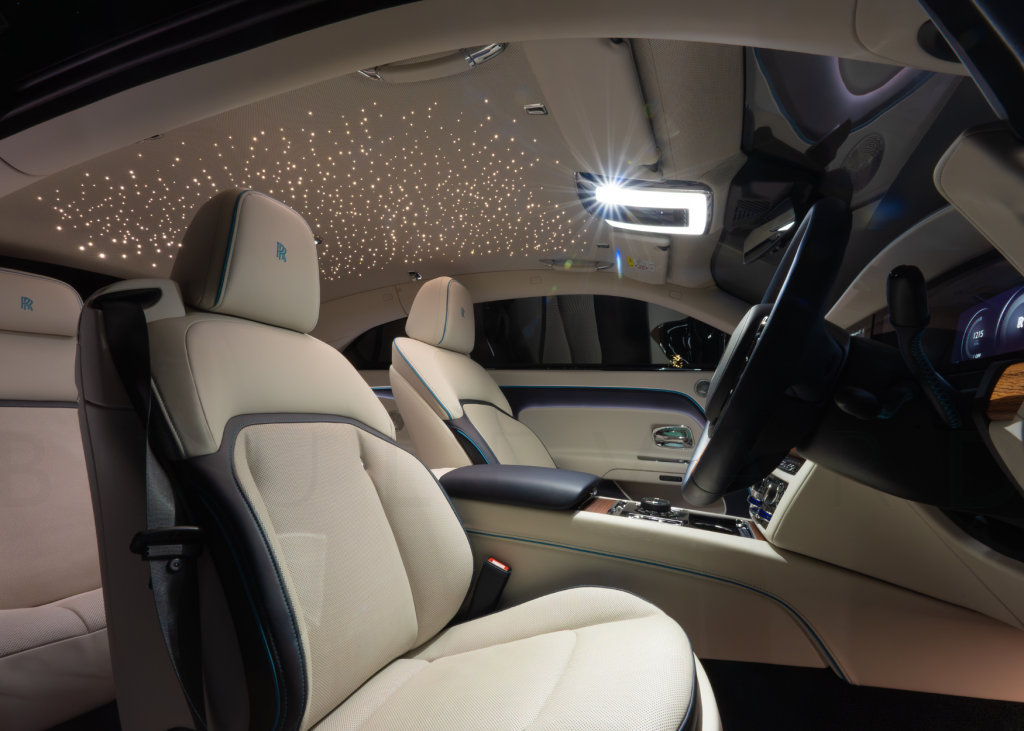
Upon sliding into Spectre, pressing the brake pedal to close the door and settling into the plush but pleasantly firm leather seats, any concern about its size versus the inner city streets of Sydney I harboured, melted away.
Steering is precise and light, but not lacking in feel, and the ride, helped by a new evolution of the marque’s ‘magic carpet ride’ suspension system also known as the Rolls-Royce Planar System (first seen on Ghost) is sublime. To get technical, this evolution comes from the alchemic-like relationship between specially developed hardware and high-speed processing capabilities, or what the marque’s engineers beautifully call ‘an orchestra of systems’. What does this mean in terms of feel? Well, to reduce rocking on uneven or undulated roads, in a straight line, the system can automatically decouple Spectre’s anti-roll bars, so each wheel can act independently.
When a corner is detected, the components will recouple and the damper (similar to the one used on Ghost) will stiffen and activate the four-wheel steering system for more manoeuvrability in the exit and entry. It’s intelligent enough to independently monitor close to 20 factors, including steering, braking, power delivery and suspension, and make minute and precise adjustments in real, micro time. You may not notice it when driving—it’s designed to be subtle—but trust me, you will once you get behind the wheel of any other vehicle.
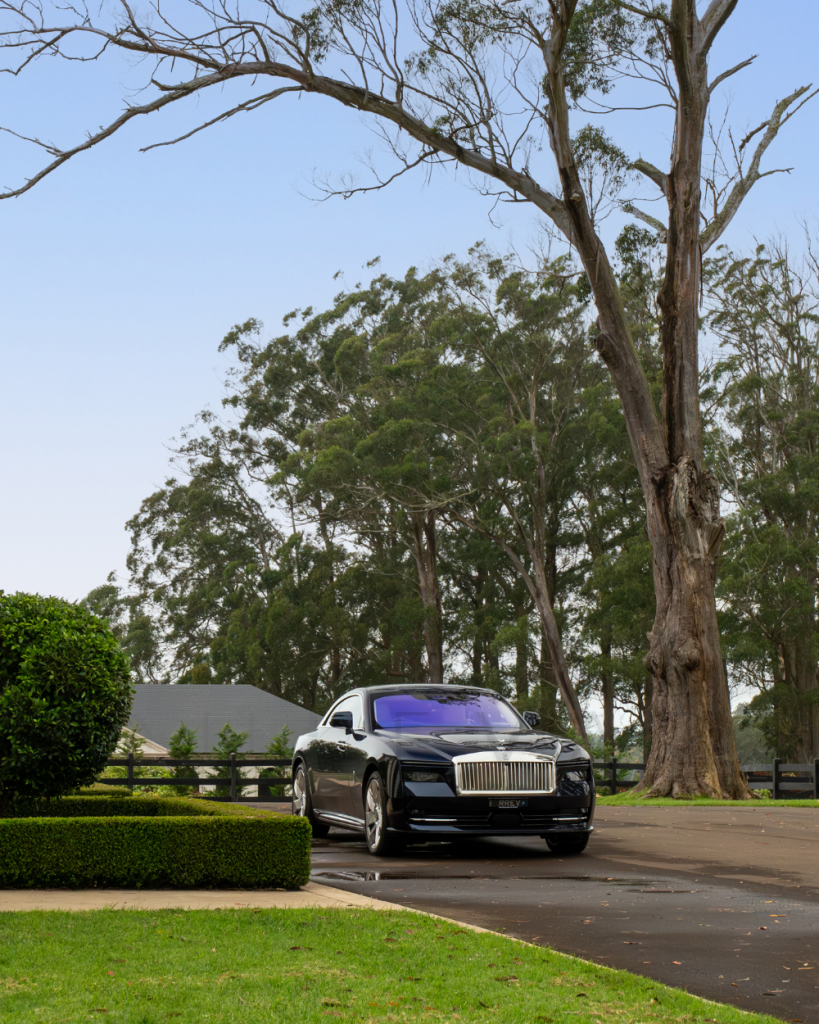
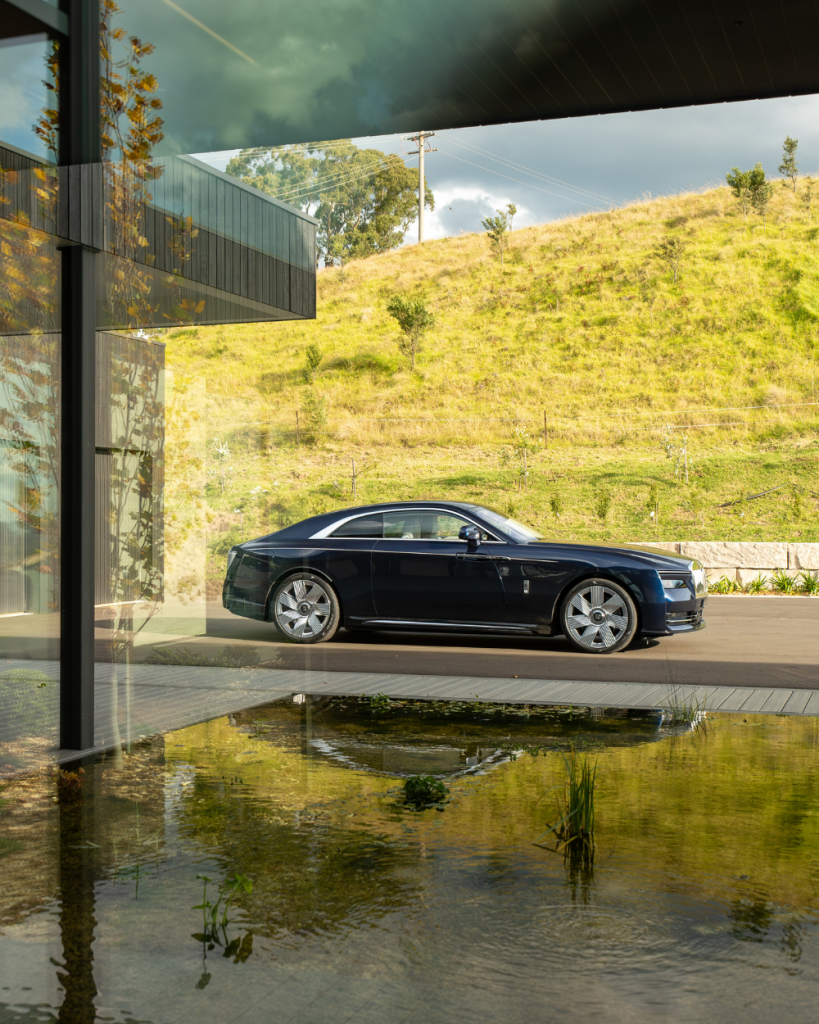
Being a coupé, Rolls-Royce designed Spectre to still feel like a driver’s car, so visibility and the play between digital and tactile buttons and switches is lovely, and the cabin cossets the occupants to elicit a feeling of control and ease. Though, this doesn’t mean rear seating comfort has been sacrificed in any way.
It’s been said many times that if ever there was a marque suited to going electric, it would be Rolls-Royce. Sure, the magnificent V12 might be a much-loved trademark of the brand’s past and present models, but there is huge merit to be gained within the twilight of the combustion engine—particularly when you add sound attenuation to the doors and a 700kg of battery in the flat floor—and the result is a near-silent and more spacious cabin experience. Spectre will no doubt become a modern classic, and importantly, appeal to those who share and delight in Rolls-Royce’s long-standing pursuit of serenity.
